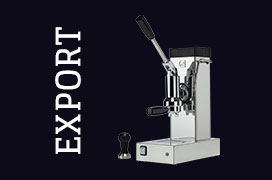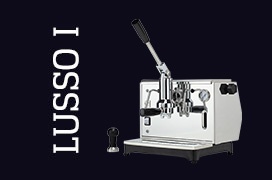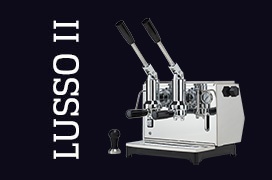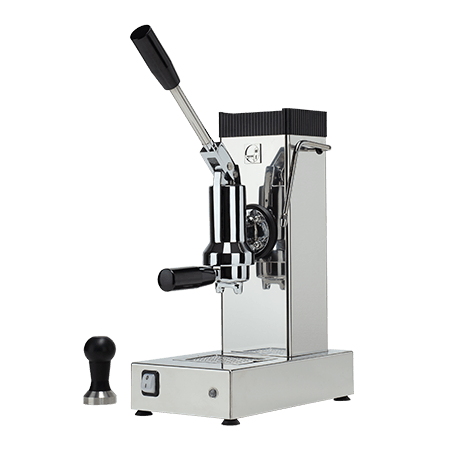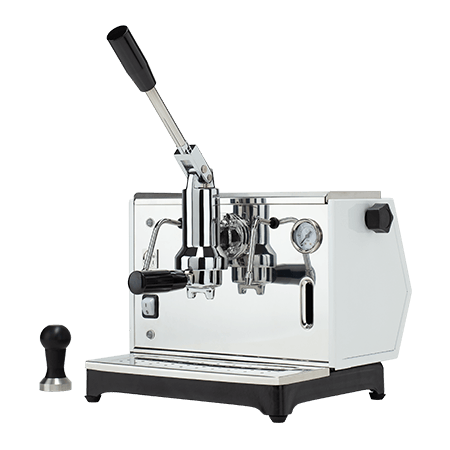Decaffeinated coffee is one of the most suitable coffee alternatives for those suffering from hypertension, insomnia, or gastrointestinal disorders. In Italy, the consumption of this beverage is around 7% of the total coffee intake and the most popular brand is Hag, which was launched on the market in the early 1900s.
It is a beverage obtained from beans deprived of their natural caffeine content, using chemical solvents or the carbon dioxide method. In reality, the caffeine is not totally removed, but the residue reaches a maximum of 0.1 %, which is the maximum amount set by the European Commission.
Until a few years ago, decaffeinated coffee was not up to the standard of regular coffee but was simply a stopgap with a less intense taste. Today, the situation has totally changed. Decaffeinated coffee beans are processed with a special system and the quality of the extract can reach the levels of normal coffee.
We at Pontevecchio, and as coffee lovers, have always invested in the extraction process, and our production of lever coffee machines proves this. Every part of the machine is designed to optimise the extraction process and enhance the organoleptic properties of the beans, even the decaffeinated ones. After all, it is well known that if you want to drink good coffee, you should do it with the right machine!
That’s why we invite you to take a look at our catalogue and discover the right coffee machine for you: the one that will help you prepare an excellent decaffeinated coffee! Before doing so, however, you should know in detail all the secrets of this beverage, which we are going to reveal to you in this article.
Decaffeinated coffee: its origin and properties
Decaffeinated coffee is coffee without caffeine, the key alkaloid contained in coffee beans. Its discovery dates to the early 20th century, to 1905 to be exact, when Ludwig Roselius succeeded in extracting caffeine from coffee beans.
The discovery of caffeine-free coffee was certainly no accident, but the research was specially commissioned by the German company Kaffee Handels Aktiengesellschaft based in Bremen. This name probably doesn’t ring a bell, but the brand under which the new beverage was marketed in 1905 certainly does: we are talking about HAG coffee, still considered the decaffeinated coffee par excellence today.
Caffeine is extracted through a process called decaffeination, which affects the chemical and physical properties of the beans. There are several methods of extracting caffeine, but the most successful is the supercritical carbon dioxide method: that is, the green coffee beans are moistened with hot water and then passed through supercritical carbon dioxide extractors.
Afterwards, the beans are cooled and depressurised in a special plant, or with the use of activated carbon. The next steps are the same as for normal coffee, i.e., the drying and roasting of the beans.
Decaffeination with supercritical CO2 is the most popular because it maintains the characteristics of the beans and does not affect the aromas. During the process, the terpenes and oils are preserved, so that the characteristic notes of the coffea plant remain intact.
Why drinking decaffeinated coffee
The taste of coffee is one of the pleasures that is hard to give up, but not everyone can tolerate the impact of caffeine on the body. Although this alkaloid has energising and stimulating properties, it is not recommended for those suffering from diseases of the nervous system, gastrointestinal system, or cardiovascular system.
Caffeine can, in fact, excessively accelerate the heartbeat, with negative effects in cases of hypertension. As a substance with energising properties, it may overexcite stressed or nervous individuals due to its effects on the nervous system.
While normal coffee facilitates digestion because it increases the production of stomach acids, it may be harmful to those suffering from gastritis. Moreover, it may also inhibit the normal function of the gastric mucosa, lowering its defence levels. Coffee consumption, particularly in the evening hours, interferes with sleep. Therefore, if you have insomnia problems, decaffeinated coffee is preferable.
Decaffeinated coffee: benefits and differences

Is decaffeinated coffee bad for you? What impact does it have on the body? Is it preferable to the consumption of traditional espresso?
Even though it was discovered over a hundred years ago, doubts about decaffeinated coffee are still deep-rooted. In particular, the fear is related to the extraction processes and the use of harmful chemicals during decaffeination. It must be said that extraction with supercritical carbon dioxide does not alter the composition of the beans at all and does not leave any kind of residue.
Solvent-based extraction, on the other hand, was the subject of enormous debate in the past. The offending compound was dichloromethane (or methylene chloride), a solvent with potential negative health effects. Currently, this compound has been banned from the food industry to make way for substances that are harmless to the body.
Apart from the caffeine extraction process, traditional coffee and decaffeinated coffee are very similar. For a start, they both undergo drying and roasting, which impart the right organoleptic characteristics to the coffee. Moreover, the preparation process is the same and those who are forced to eliminate caffeine, do not have to give up the pleasure of espresso.
As opposed to traditional coffee, decaffeinated does not stimulate the nervous system, so it promotes rest and does not cause anxiety. It is suitable for low-calorie diets as it contains less oil than normal coffee. It stimulates digestion without adversely affecting the stomach and intestines.
Many scientific studies also demonstrate coffee’s positive impact on neurodegenerative diseases, such as Alzheimer’s disease. This is due to its rich content of antioxidant substances. Finally, decaffeinated coffee seems to have an analgesic action against headaches.
In summary, therefore, it can be said that decaffeinated coffee provides 5 macro benefits to our organism, namely:
- does not adversely affect the sleeping process;
- contains antioxidants;
- is rich in essential vitamins;
- protects neurons;
- helps reduce heartburn.
This is due to its special components or, in the case of the first benefit, its non-components. Being decaffeinated, in fact, this coffee is caffeine-free and, consequently, will not have any negative influence on your sleep. As for the antioxidants and proteins in which it is rich, these are elements that benefit our health entirely: antioxidants, in particular, reduce the risk of developing heart disease, type 2 diabetes and even cancer. Similarly, thanks to its positive effects on the brain, it can reduce the risk of developing neurodegenerative diseases such as Alzheimer’s and Parkinson’s disease.
Last but not least: decaffeinated coffee is ideal if you suffer from heartburn as, compared to regular coffee, it tends to cause it much less, or not at all.
Contraindications
Despite the great benefits of decaffeinated coffee, there is a downside, which translates into a number of contraindications that you may run into when drinking it.
To begin with, as you should have understood by now, decaffeinated coffee is not completely free of caffeine. This means that if someone who is not used to drinking coffee drinks it, he or she may still be affected by that infinitesimal dose of caffeine, experiencing typical symptoms such as insomnia, nervousness, tachycardia, etc., just as if he or she had drunk a normal espresso.
Similarly, the solvents used during the decaffeination process could bother the most delicate stomachs, or people suffering from intolerances. Lastly, there is also the question of the taste of coffee: while it is true that the difference from normal coffee is hardly noticeable nowadays, it is also a fact that the most refined palates might notice it anyway. Fortunately, however, there is a remedy for this, which is to prepare decaffeinated coffee with the right tools.
How to make an excellent decaffeinated coffee
Over the years, the coffee industry has evolved enormously, and decaffeination techniques have become more and more refined. Decaffeinated coffee has developed into an excellent alternative to traditional coffee and can be enjoyed by anyone.
Despite the extraction of caffeine, decaffeinated coffee has several things in common with espresso: cultivation, harvesting, origin, drying, roasting, extraction method and consumption. Clearly, each of these steps must be taken care of carefully so as not to lose the rituality associated with coffee consumption.
We at Pontevecchio have always been involved in the production of lever espresso machines, dedicating all our experience to every aspect of coffee extraction. Our lever espresso machine models are suitable for the preparation of both traditional espresso and decaffeinated coffee.
So, as we have already suggested, all you have to do is choose the lever machine you prefer and enjoy a great decaffeinated coffee!
